Subtle differences…can make a big difference. NLBN Baits
By Dennis Zambrotta
Every summer my friend Josh makes a yearly trip from California to Newport Rhode Island to photograph the world-famous Newport Folk and Jazz Festivals. We also use the opportunity to catch up and do a little surfcasting for striped bass.
Josh and I took in a casting session on Newport’s Cliff Walk while he was here this past July. Fishing was not very successful; Josh got the only strike of the evening on a new jig head and soft plastic paddle tail he had just purchased at The Saltwater Edge in nearby Middletown. At the end of the session, Josh gave me the jig heads and paddle tails as he couldn’t use them for the California steelhead his targets back home. I never even gave them a second thought or look for the next two months.
Well, these new jig heads and paddle tails stayed unused in the back of my vehicle until late September. Then one night I rummaged around through overloaded boxes of gear looking for something new to try as my recent casting sessions had produced dismal results. I came across the package of jig heads and soft plastics labeled “NLBN.” “What the hell does NLBN stand for?”, I remembered thinking at the time. I finally looked closely at the jig heads and was immediately impressed at the quality and strength of the hooks. If you’re a “big fish” fisherman you always look at hook strength first. Next, I grabbed one of the 5-inch paddle tails. It was wide-bodied, not slim like many of the soft plastics currently available. I immediately thought wide body equals slow sink rate. This could have possibilities on my shallow water casting grounds. But as they say the proof is in the pudding. After all, many new products over my 50 years of surfcasting have impressed me at first glance, but many ended up being duds.

I quickly figured out how to attach the paddle tail to the ¾ ounce jig head via the stainless-steel pin spring attachment molded into the jig head – another ingenious design. I crept out to one of my favorite local rock perches that allows me to cast into 4-6 feet of relatively shallow water. This would be a perfect test to see if I could slowly swim this bait through without hanging up in the sticky bottom structure.
I started out with one of my favorite plugs, a Cotton Cordell Redfin, and had an immediate take on my first two casts. Striped Bass were here - perfect time to test the NLBN paddle tail. I quickly clipped on the five-inch paddle in a color pattern called “Hell Yeah Butter.” First cast and the bait was immediately hit multiple times before I hooked up with a plump 15-pound bass. Long story short I was able to catch multiple bass for the next hour on the same bait. The soft plastic showed very little damage, all I needed to do was periodically re-screw the bait into the jig head a half turn to straighten it out. The hook showed no signs of straightening despite the consistent action with bass between 10-25 pounds. Better yet the bait fished perfectly in this shallow water location, even though my retrieve was very slow I never touched or snagged on the bottom. That was impressive considering that when I cast the same weight bucktail jig/pork rind combo or jig head and Sluggo combination into this location I would contact/snag bottom occasionally requiring a quicker retrieve than the bass would normally prefer. To say I was impressed is an understatement because new products that are productive immediately don’t come along very often in this highly competitive fishing market.
I continued to use the NLBN 5-inch paddle tails for the next few weeks with great success. I purchased some extra tails in different color patterns and more jig heads in different weights. This allowed me to experiment more to find out potential techniques for fishing different water depths and in different weather/wind conditions. In short everything I tried… worked well.
At this point I began to ask some of my surfcasting friends if they knew about these baits. Low and behold some of these sharpies had already discovered them and were using them with great success. Steve McKenna was having great success using the 3-inch models alone or behind a casting egg. Another was raving about the 8-inch models taking some very impressive bass for him. “8-inch,” I asked? I hadn’t heard or seen that size at Saltwater Edge. I did a little research by going to the NLBN webpage. Seems this is a company based in Florida and the baits were developed for targeting Tarpon and other large species. The 8-inch tails and matching jig heads were only available direct from the website at the time (although they are now available from Saltwater Edge.) I was intrigued by the 8-inch tails. Fortunately for me a friendly surfcaster at the Saltwater Edge just happened to have a few and gifted me one just before I was to leave for my annual week of surfcasting on Block Island. The Block Island surf would be the ultimate test for the NLBN products.
Upon my arrival on Block Island, I didn’t waste any time trying out my new discovery. On my first afternoon casting session the first lure out of the bag was the 5-inch ¾ ounce NLBN butter colored paddle tail. We hiked into a shallow boulder field cove on the island’s southeast corner. Waves were rolling in nicely. It only took a half dozen casts to hook my first bass of the week. An hour later I had three more bass during this initial exploratory outing. I was really starting to fall in love with this lure. By the end of our very fruitful week in the Block Island surf NLBN lures had taken approximately half of all the bass I landed, some of them pushing the mid to upper 20-pound class, and all four of the 8-14-pound class bluefish I landed. The NLBN performed flawlessly in the shallow boulder field structure the island is famous for.

There are lots of soft plastic baits in the Northeast striped bass surfcasting market. Many of them are very effective. There are subtle differences that make NLBN baits special in my opinion. What I’ve learned over my many years of surfcasting is that subtle differences are what separates many different brands of the same type of lures. These differences can be what material is used to make them, weight, size (length and/or width), color, sink rate, etc. For my use, the NLBN paddle tails are shaped perfectly which slows sink rate and allows a slow shallow water presentation. This is so critical for boulder field casting when certain areas have a short window of outgoing tide to fish before normal presentations must be retrieved too fast. Again, a very subtle difference, but one that makes all the difference as far as the striped bass is concerned.
So, let’s take a closer look at NLBN products. The soft plastic tails come in two different types: the paddle tails, and straight tails (of which I have yet to experiment with.) Paddle tails are available in 3-inch, 5-inch, and 8-inch models. Straight tails are available in 4-inch (Mini Mullet), 5.5-inch (Lil Mullet), and 8-inch.
Jig Heads and hooks: Paddle tails are meant to be fished attached to NLBN specially designed jig heads which come in various colors with 3-D eyes and pin spring molded into the head. The jig heads for the five-inch paddle tails use heavy-duty Mustad 2X 60% Bend Short Shank Jig Hooks, model 34185. They come available in weights of ½, ¾, 1, 1.5, 2, and 3 ounces.

Jig heads for the eight-inch paddle tails are poured onto heavy-duty Mustad 60% model 32824 jig hooks in a 9/0 size. Weights ½, ¾, 1, 1.5, and 2 ounces. (Note: 8-inch tails can also be used with same jig heads mentioned for the 5-inch models.)
Jig heads for the 3-inch tails are also on the Mustad 32824 hook, size 2/0. Weights ¼, 3/8, ½, and ¾ ounce.
Another item available are jig heads in ½ ounce size poured with Tin rather than Lead. Using Tin instead of Lead is an old-school method to slow descent. Again, a subtle change but one that could make a difference.
NLBN straight tails are designed to be fished with BKK heavy-duty Titan Diver and Rider worm hooks.
NLBN baits are offered in a handful of color patterns. So far, I’ve only experimented with Hell Yeah Butter and Green Back, both were effective.




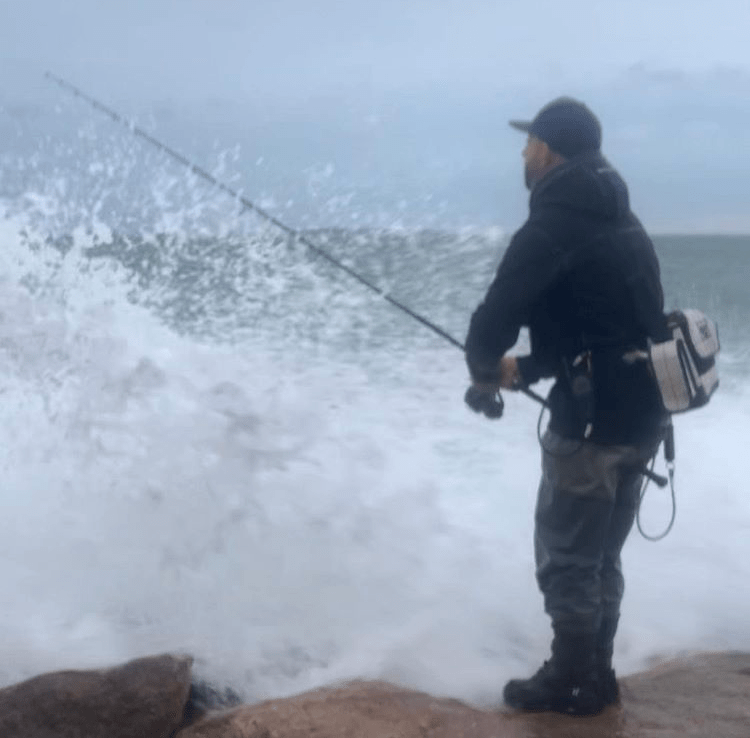

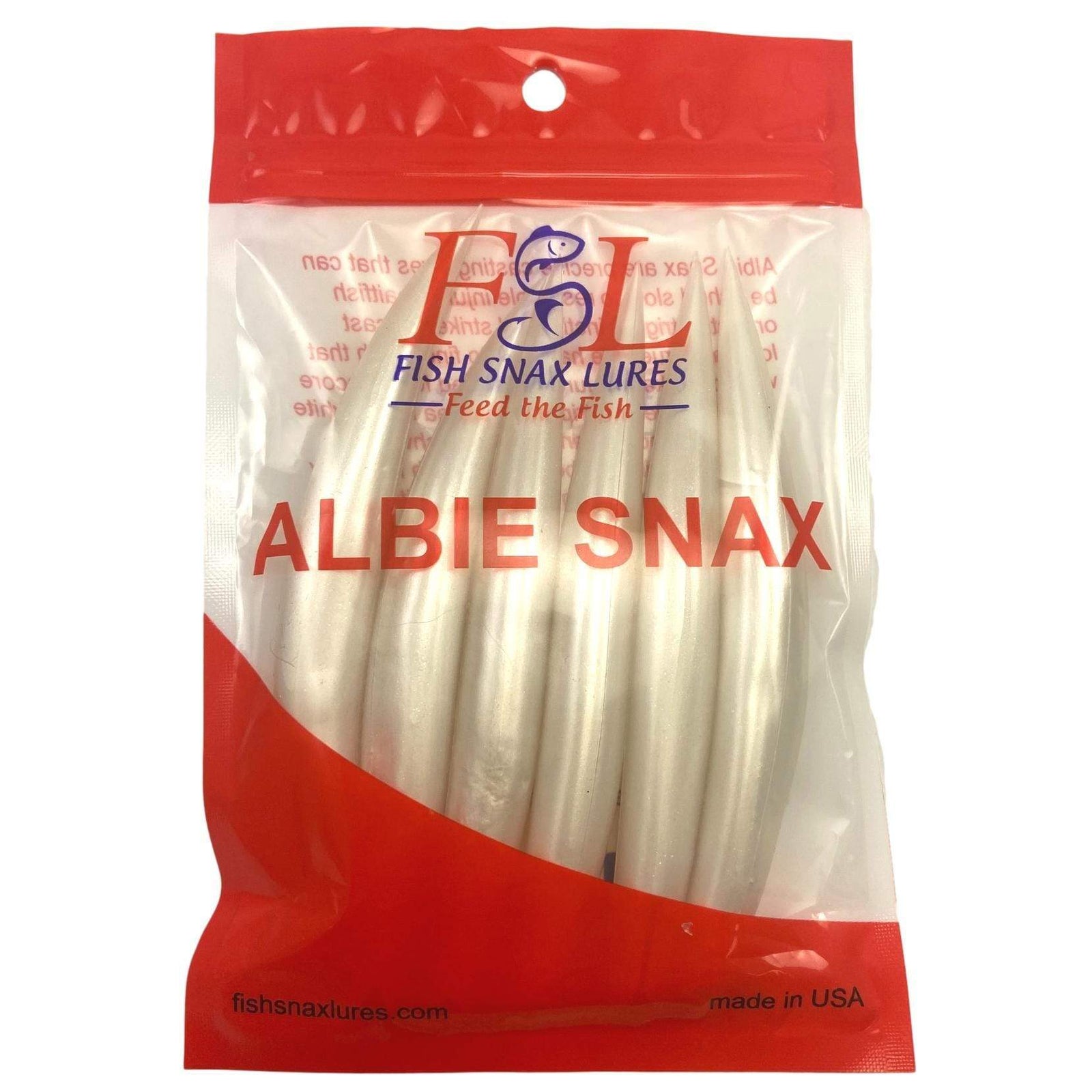

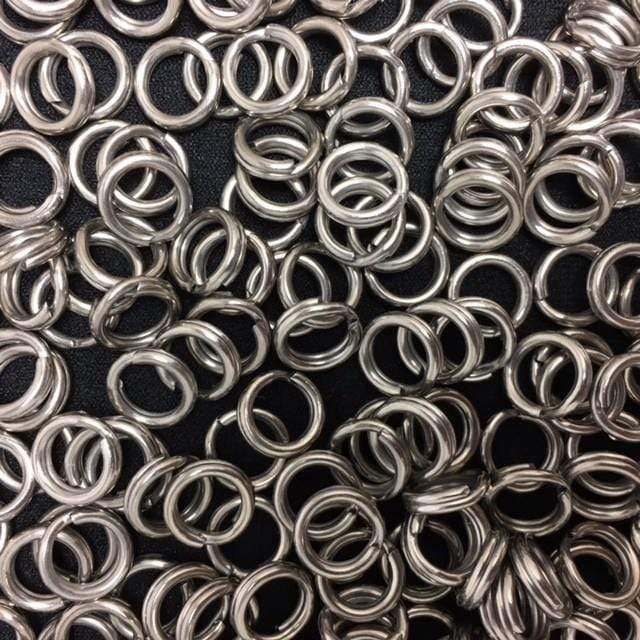
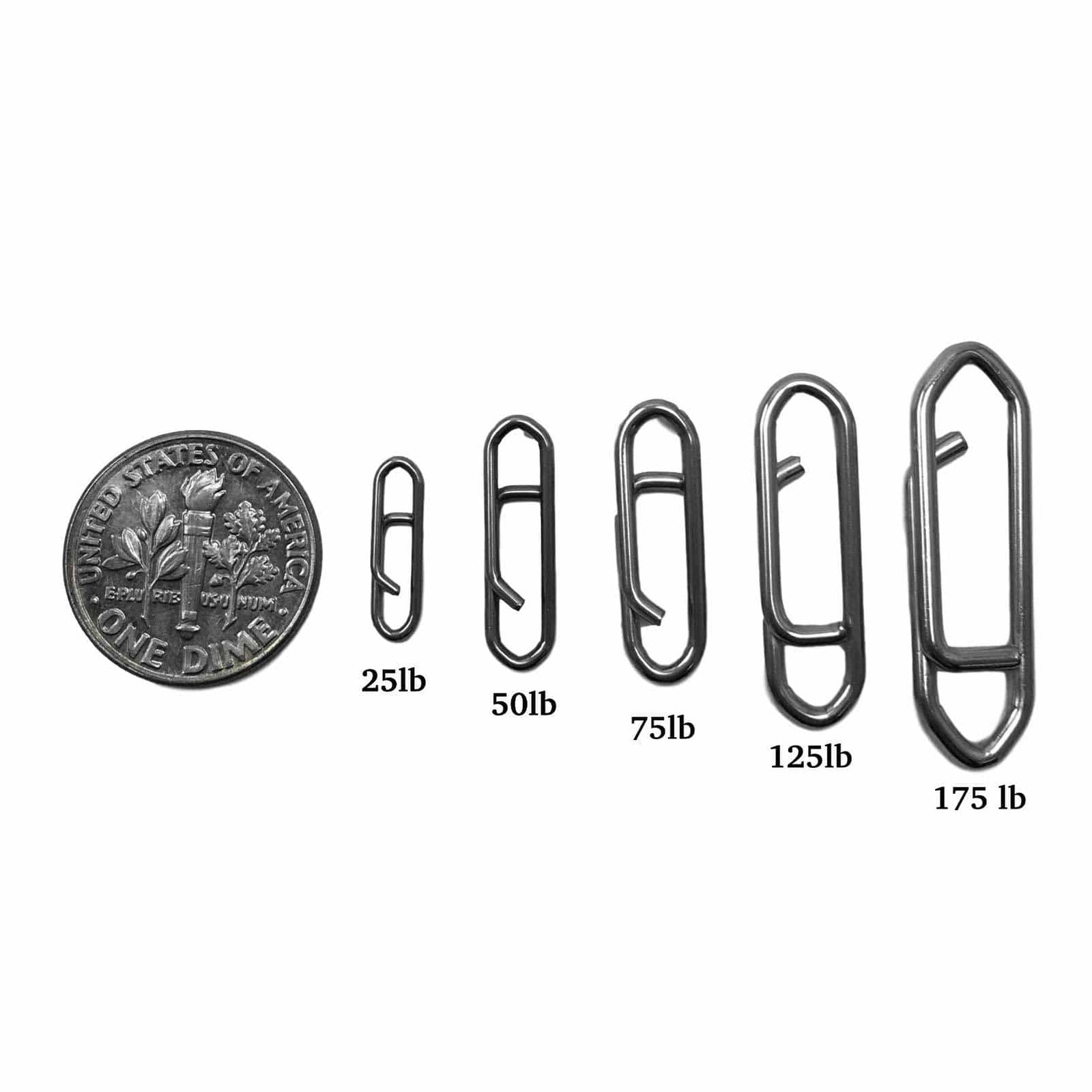

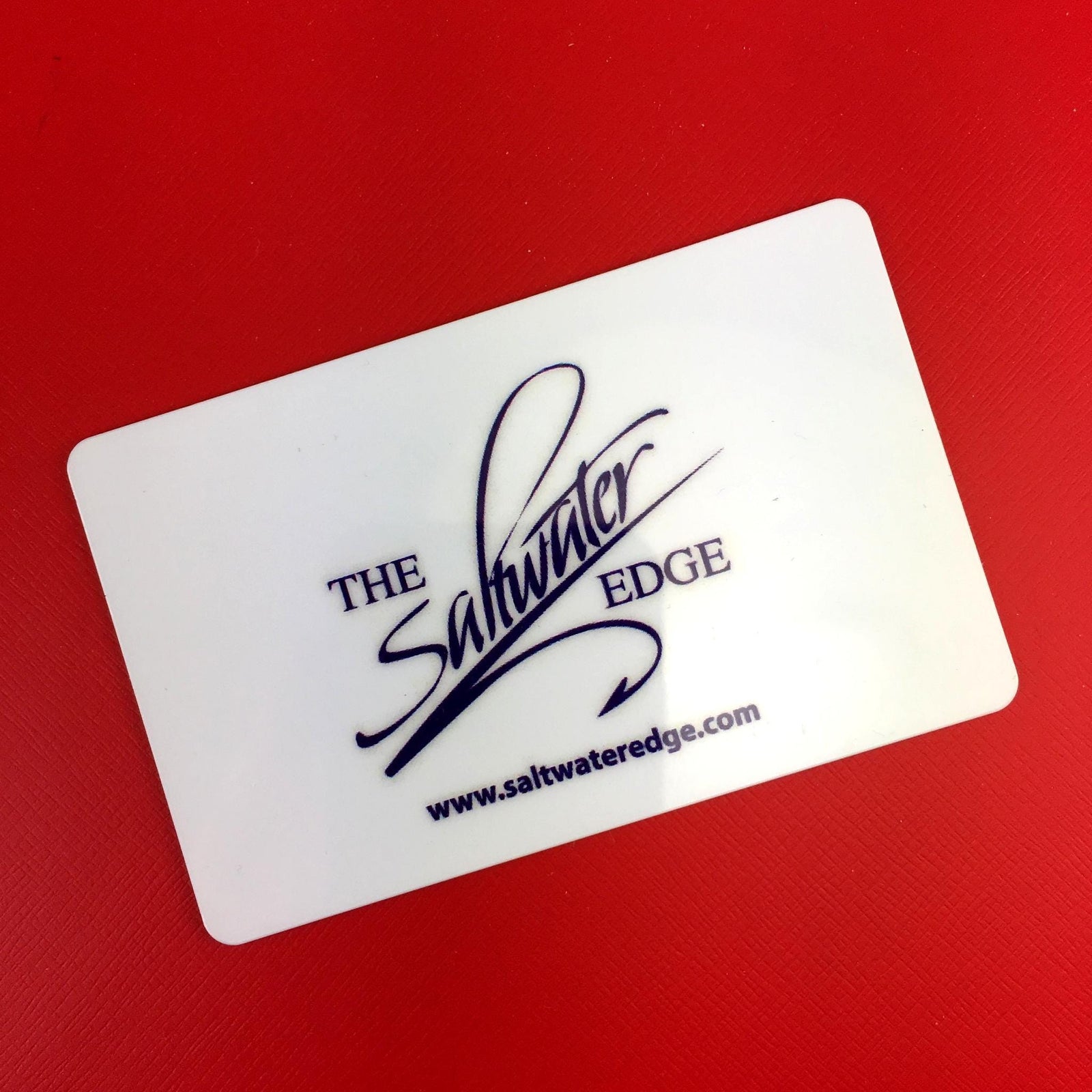
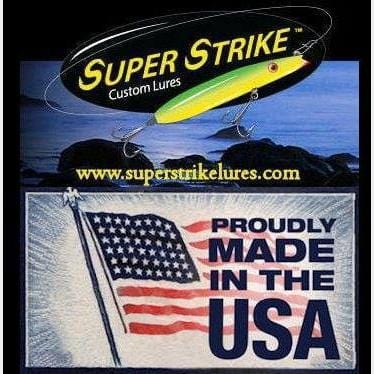

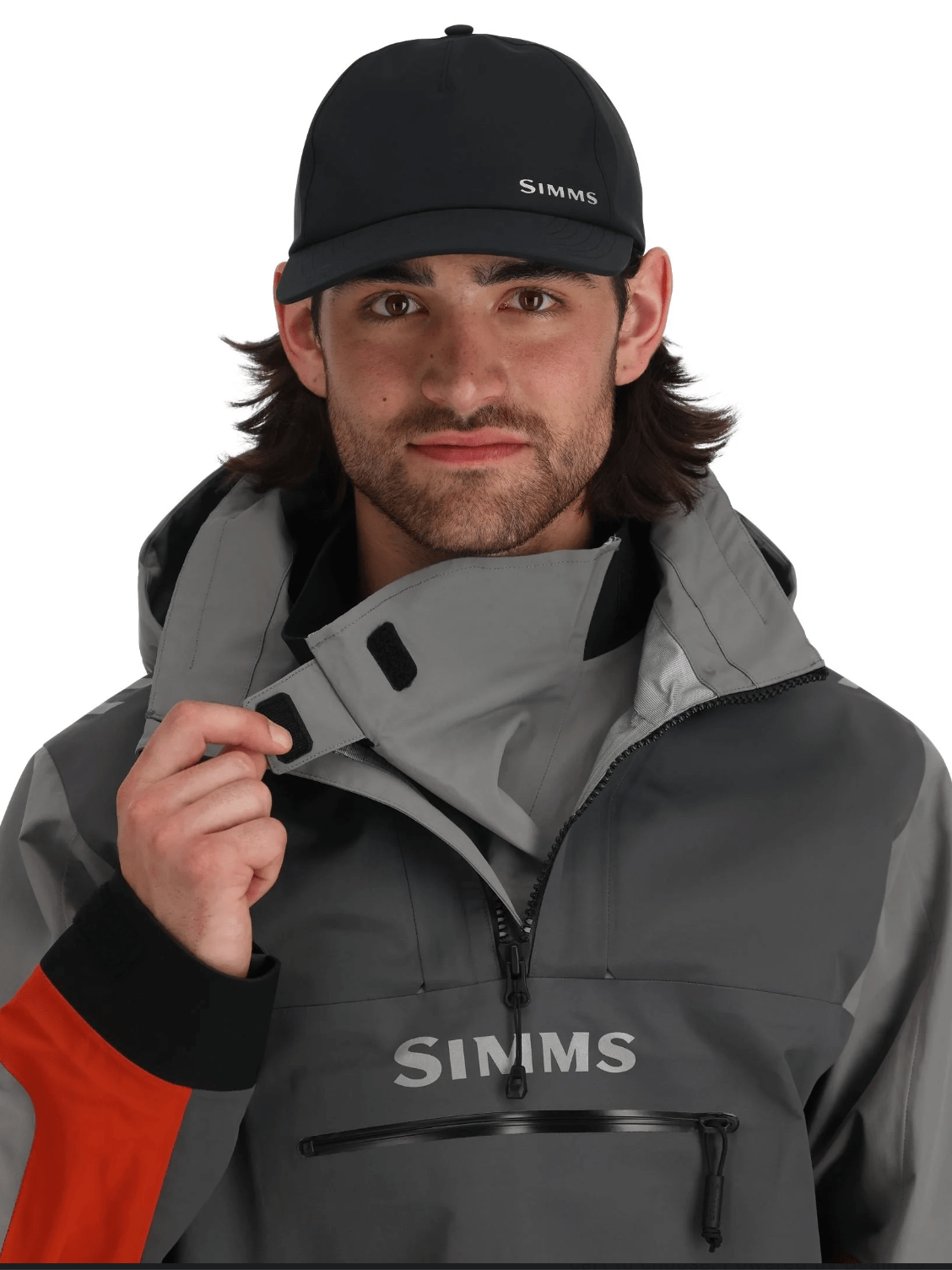

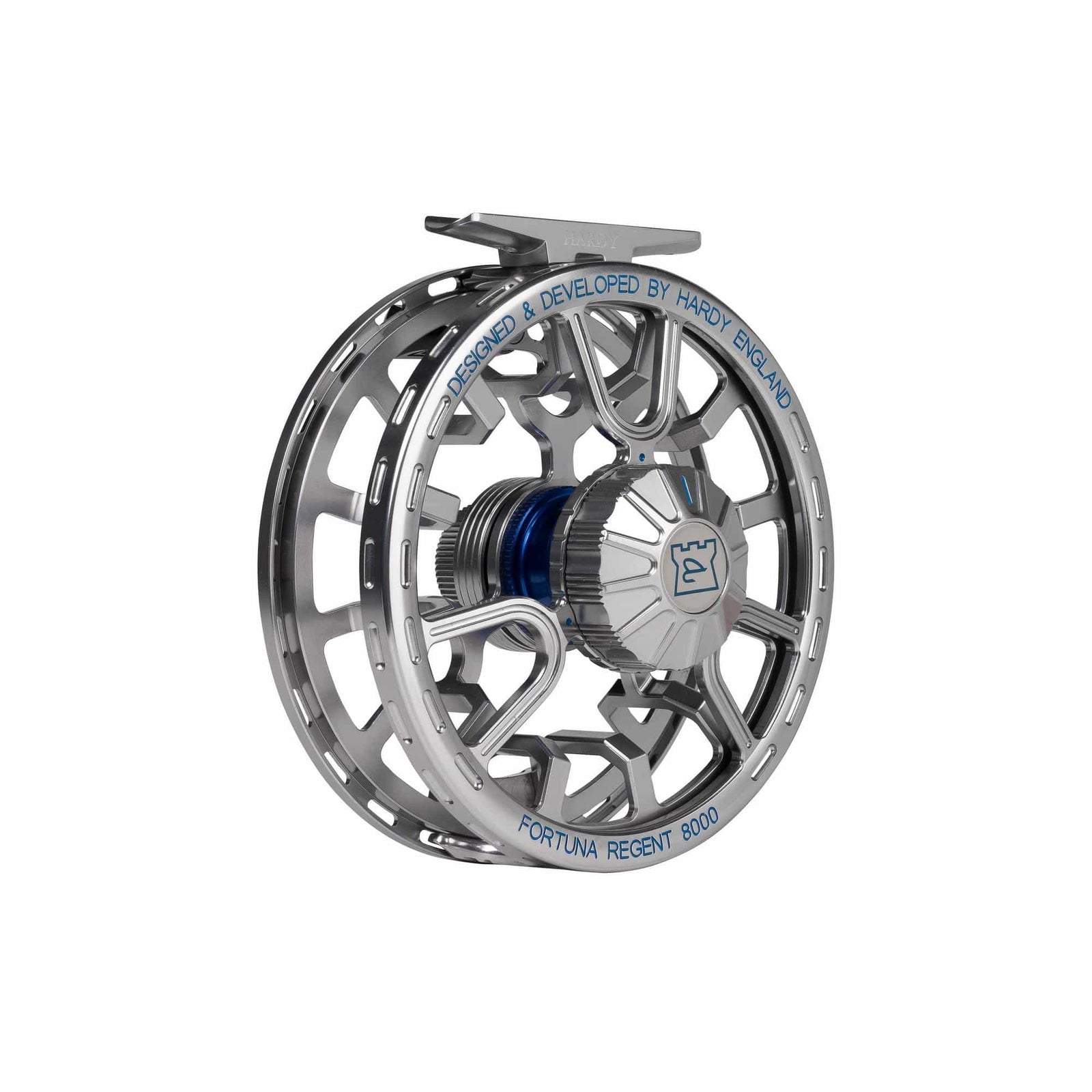
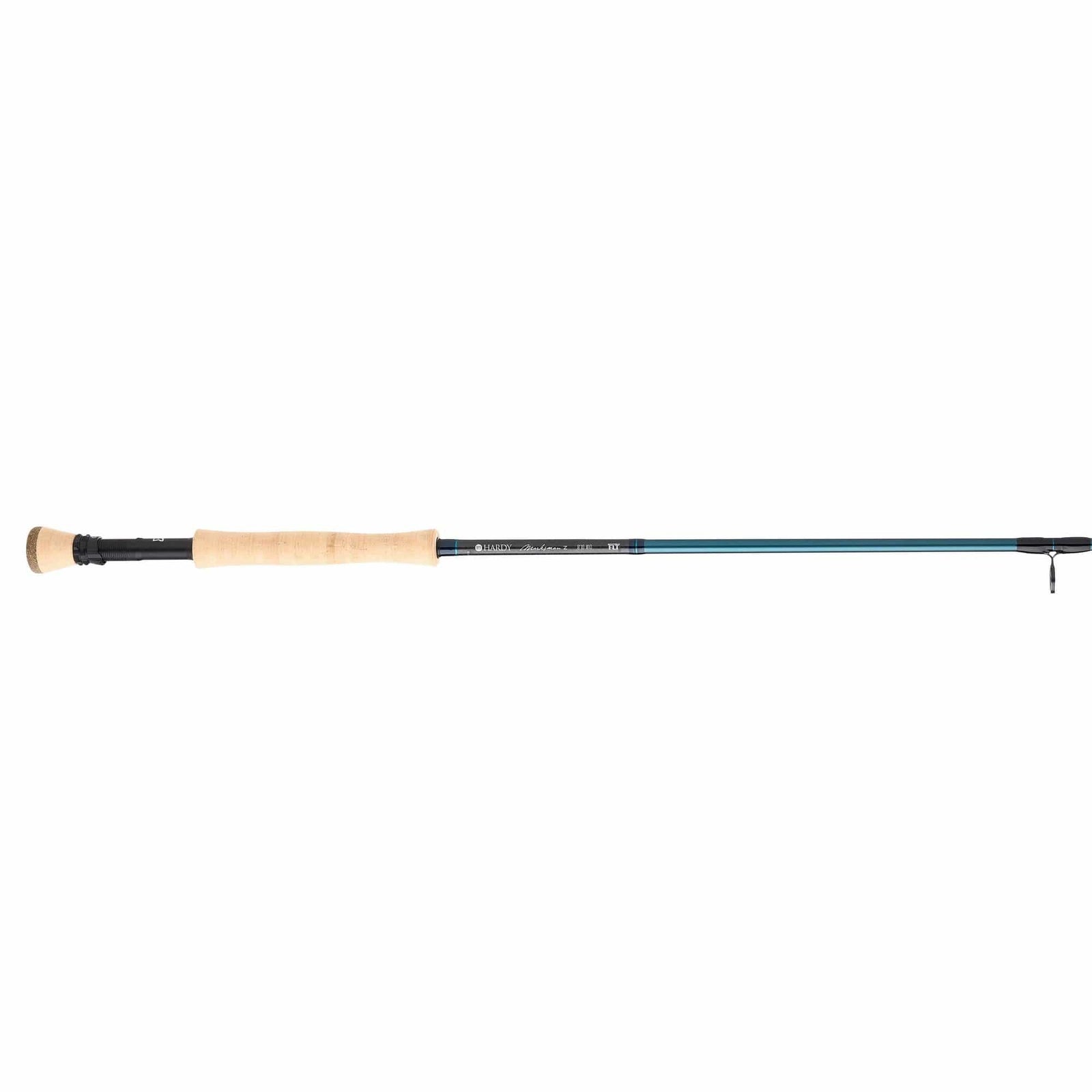
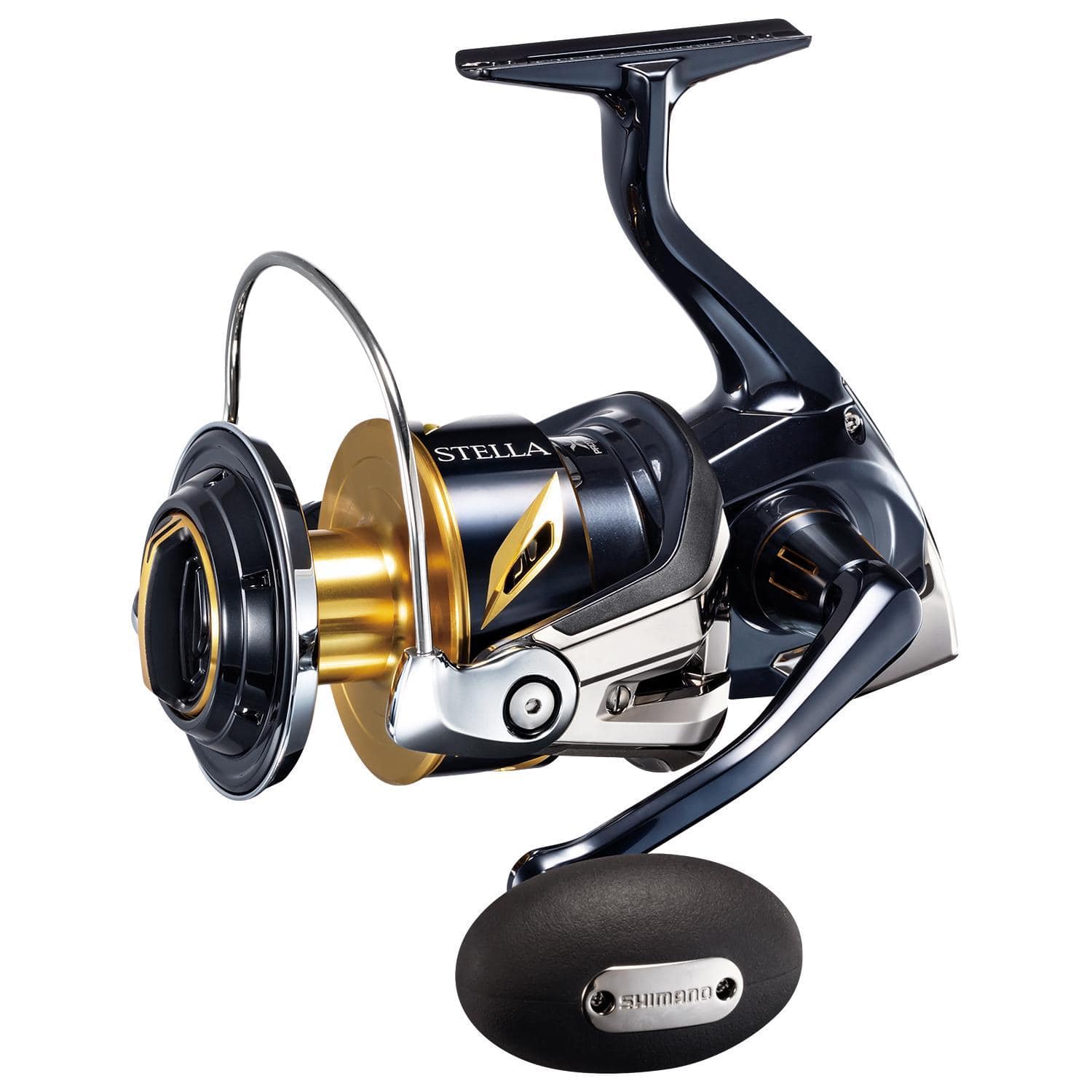
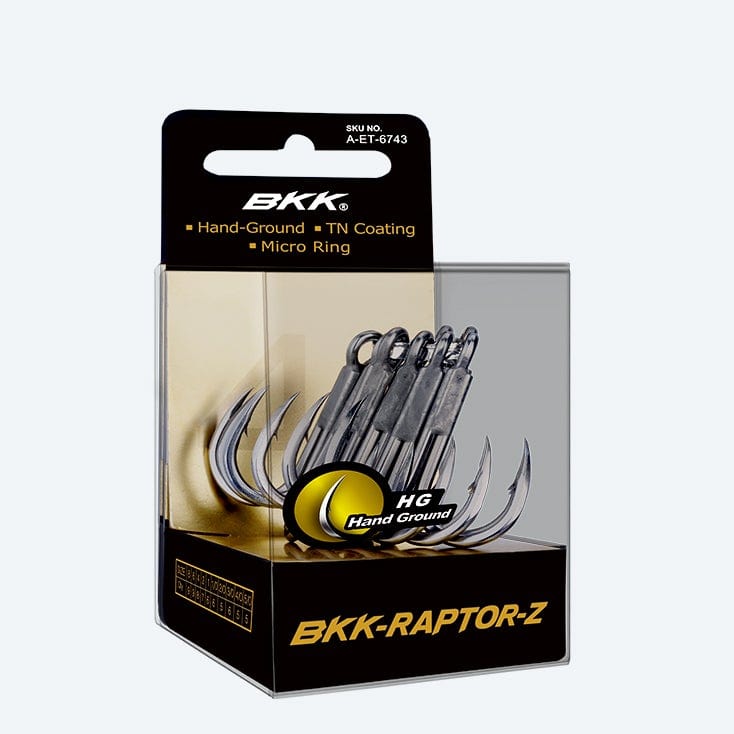
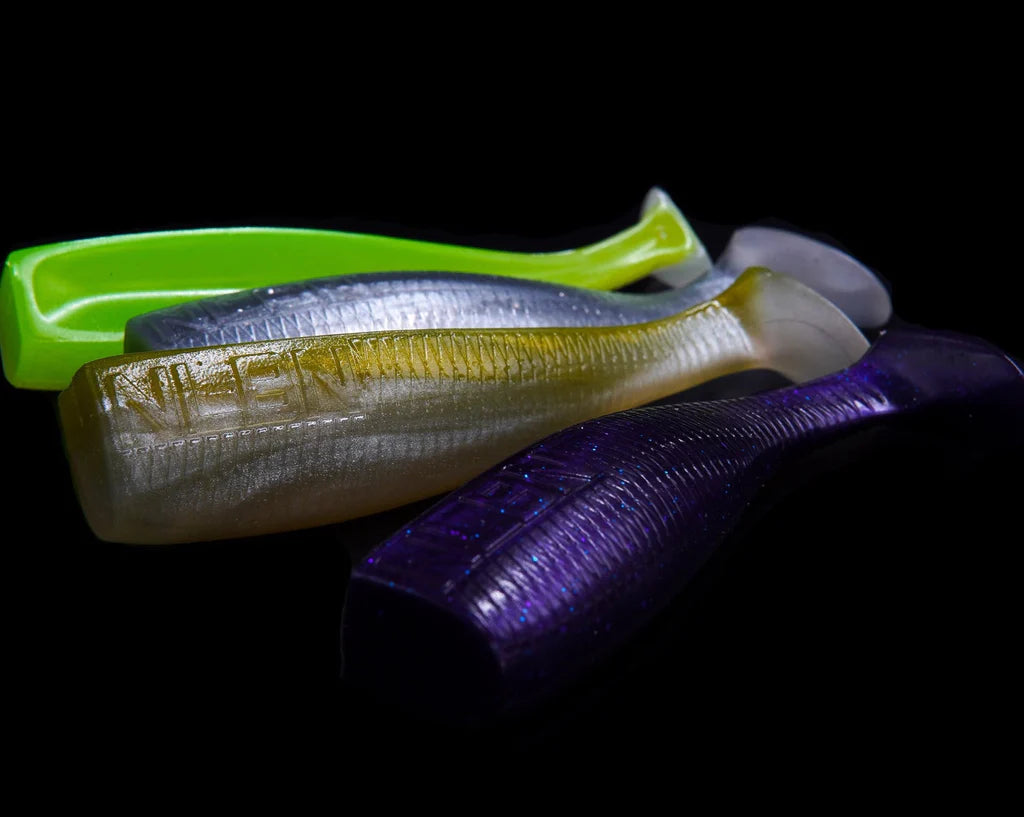
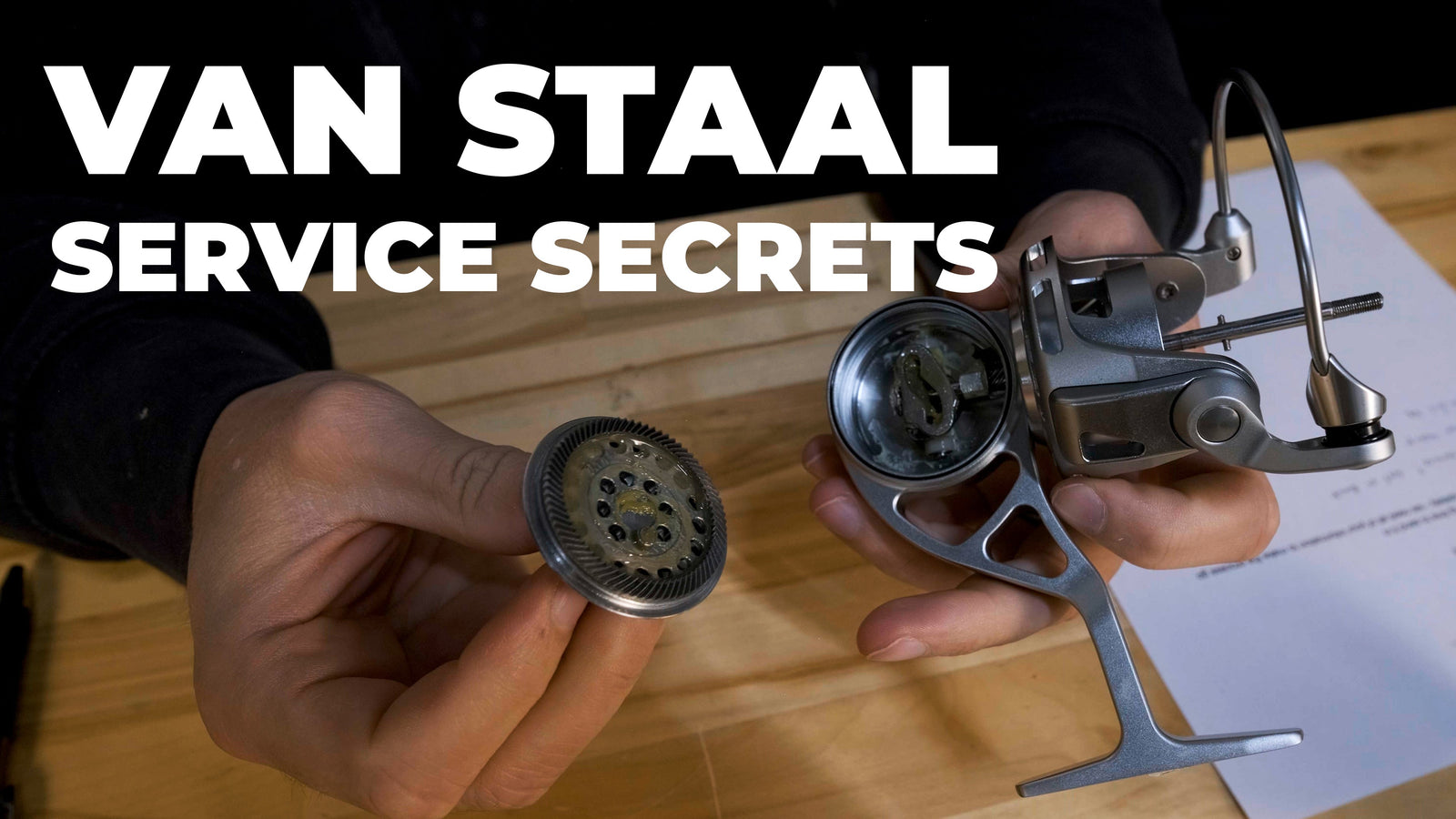


Leave a comment (all fields required)